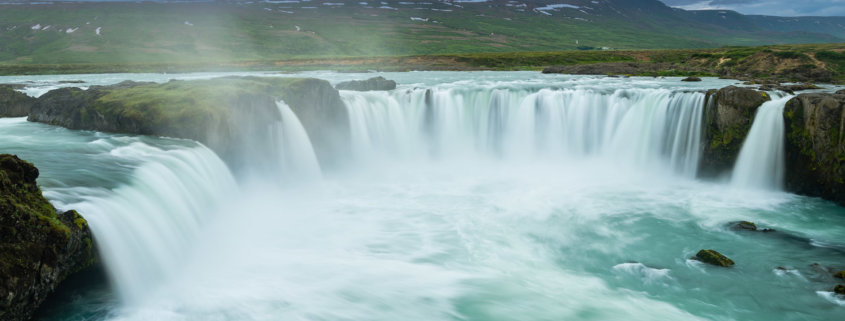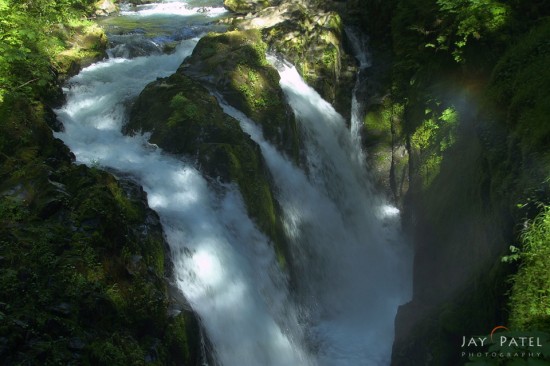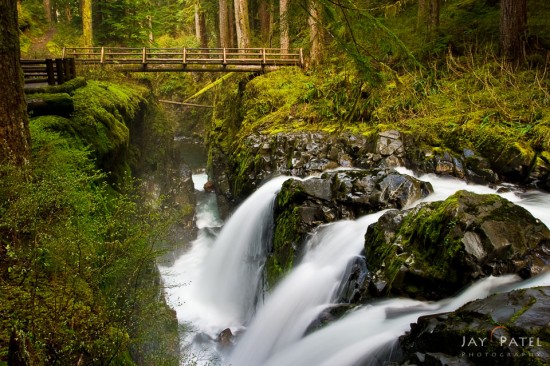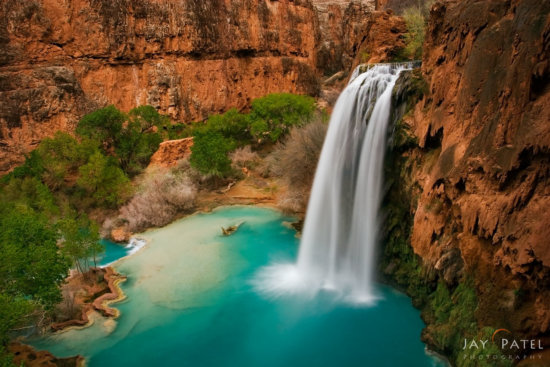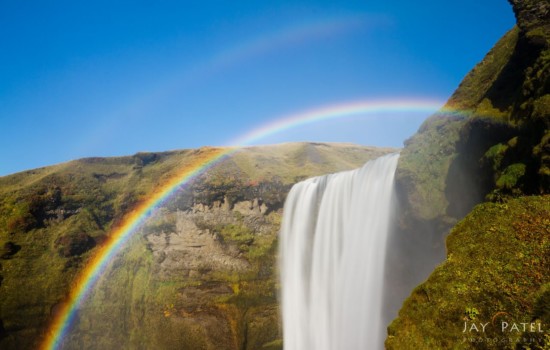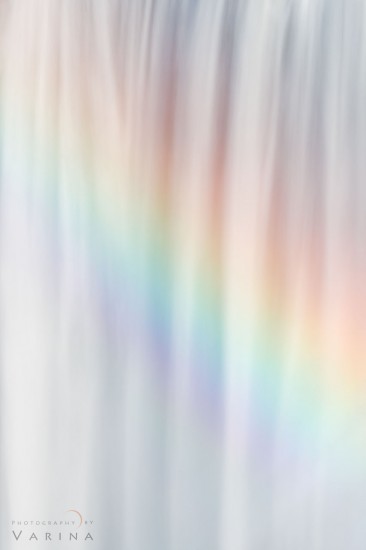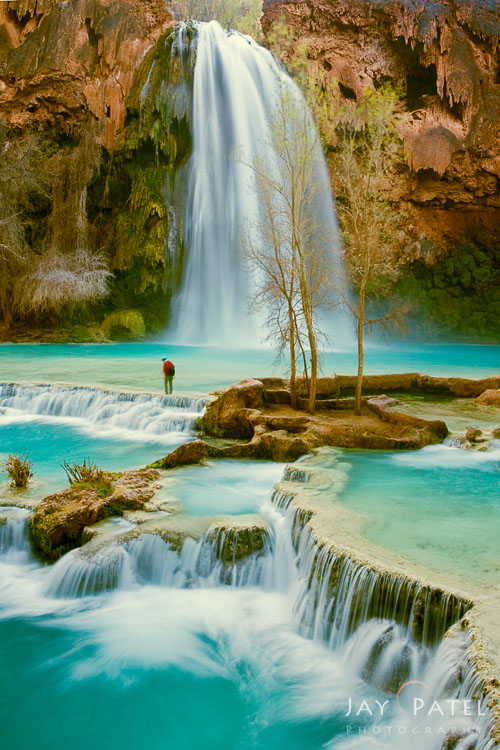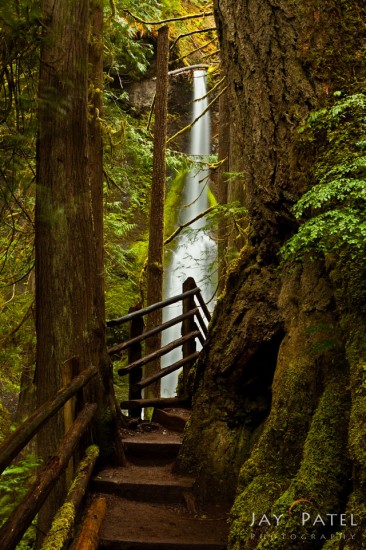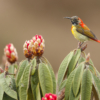6 Effective Ideas for Stunning Waterfall Photography
I love waterfall photography. There is something about that smooth flow of water that just creates a calm feeling. Another reason to pursue waterfall photography is because it is popular as a fine art print. And finally, stunning waterfall photos can inspire other photographers to pick up their cameras and go exploring. It certainly inspired me when I was starting my photography career.
However, when I tried to capture my first waterfall photo at Sol Duc Falls in Olympic National Park, it was less than inspirational. It struggled with blown highlights and dark shadows. Stunning waterfall photos are characterized by incredible details, vibrant colors, and an engaging composition. Everything that my first waterfall photo from Olympic National Park lacked.
After my first attempt, I soon learned that waterfall photography is not as simple as it looks. I had to overcome a number of different challenges to capture a half decent shot of Sol Duc Falls.
It took me a couple of years to acquire the skills needed to correctly photograph the beauty of waterfalls. And it took me some time before I was able to capture a decent photo of Sol Duc Falls. Since then I have photographed a number of different waterfalls from around the world. The following are a few practical waterfall photography tips to help you get started.
Use a Circular Polarizer Filter to Reduce Glare
The area around waterfalls is often wet. Because of this, a circular polarizer is essential to bring out the details and cut down the glare of the wet rocks and vegetation. A circular polarizer cuts down the light entering your camera by 1.5 F-stop to 2 f-stops. This slows down the shutter speed. For this reason, we sometimes use a circular polarizer as a 1.5 f-stop neutral density filter.
Effective use of a circular polarizer requires you to know how to set the circular polarizer properly, know its side effects (such as uneven polarization), and know its limitations.
Soft Light is Ideal for Waterfall Photography
Awe inspiring waterfall photography requires the right kind of light. Most nature photographers prefer soft overcast light for photographing waterfalls. However, you can use any type of light to capture stunning waterfall photos.
I shot the Yellowstone Falls photo from Yellowstone National Park in Wyoming during the afternoon under a patchy stormy cloud cover that created a “spotlight” effect on the waterfall. The waterfall photography in Havasu Canyon was conducted when the entire canyon was left in deep shade late in the evening. I captured the photo from Skogafoss waterfall in Iceland under harsh late afternoon sunlight.
Pay Attention to the Highlights in Water
Depending upon the volume of water, it is quite possible to overexpose the highlights in falling water even if you are shooting in heavy overcast conditions. While photographing waterfalls, it is best to check the exposure after each shot and use bracketing if needed.
I took two photos with different shutter speeds and combined them using Photoshop Layers & Masks to create this photo of Metlako Falls in the Columbia River Gorge.
I exposed one photo for the highlights in the water and the other for the foliage around the waterfall.
Use Photography Composition to Create Interesting Perspectives
Photography composition can either make or break your waterfall photos. Here are a few things to remember:
- It is best to avoid distracting elements when photographing waterfalls.
- You can use the cascades at the base of the waterfall to form leading lines.
- It is not always necessary to photograph the entire waterfall.
- Sometimes a minimalist photography composition of just part of the waterfall can produce a stunning photo like this shot by Varina Patel from Iceland.
Tall waterfalls often require a vertical photography composition to capture them properly. However, we always make it a point to capture both the vertical and horizontal waterfall photography compositions. This gives us the flexibility to use waterfall photos for a variety of different projects for our clients and our own websites.
Using Human Elements in Your Waterfall Photos
It is hard to tell the scale of a waterfall without a good reference point. Including human elements in your waterfall photos can not only give an idea of the scale of the waterfall, but can also help create mood and drama. I captured this photo of Varina crossing Havasu Falls in Arizona. Including her in the waterfall photo gives viewers a perspective on the size of Havasu Falls.
You can also use the human elements in waterfall photography compositions. In this photo above from Maryemere Falls from Olympic National Park, I used the fence on the trail as a leading line to draw the viewer’s attention to the waterfall.
Use Post-Processing to Bring Out Details, Textures, and Colors
Soft overcast light, a common choice when photographing waterfalls, may render the original image flat and uninteresting. For this reason, you must pay particular attention to your post-processing workflow for waterfall photography. I use Photoshop Layers & Masks to bring out the details and contrast without sacrificing the details in the highlights.
As noted earlier, there are times when photographing waterfalls requires you to use exposure bracketing to capture all the details in highlights and shadows. When faced with this situation, I use Photoshop Layers & Masks to manually blend my waterfall photos. This post-processing workflow allows me to have ultimate control over each and every part of my waterfall photo.
Waterfall photography requires favorable weather conditions that are sometimes hard to predict. Drought can dramatically impact the flow of the water and sometimes render the waterfalls completely dry. Alternatively, too much rain can alter the colors and flow of the water and make the waterfall photos very unappealing. On one of my trips to Iceland, heavy rains the day before had changed the striking blue green colors of the Godafoss to an unappealing brown color as seen in the photo below.
As you can see, you must pay attention to small details when photographing waterfalls. If you are using a slow shutter speed to capture smooth flow of water, you need a sturdy tripod and remote release or a 2-sec timer to keep your camera steady during the exposure.
Now all you need is to find a stunning waterfall and you are all set. Good luck.

